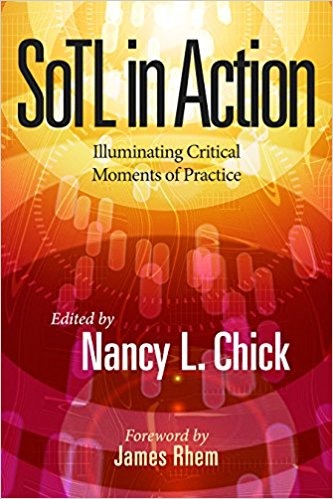educational research
Select an item by clicking its checkbox
Date Reviewed: April 15, 2020
Academics trained in different fields are sometimes at a loss of how to conduct research in the scholarship of teaching and learning (SoTL). Does SoTL have its particular methodologies different from those of other fields? Who are the audiences of SoTL and how can one join the conversation? Is there a quick guide, which introduces the diverse approaches with illustrations? Can we learn from the experts, who can provide advice and point out the pitfalls? This book is helpful for beginners to think more clearly of the scope and research in SoTL, and it also provides insights for seasoned scholars who want to learn from others in diverse disciplines.
The book is divided into three parts. Part 1 focuses on the foundations of SoTL, including discussion of the origins of SoTL projects, ways of identifying research issues, the relationship between educational research and SoTL, and the alignment of research methods with purpose. In Part 2 contributors offer examples of specific research methods with examples. These methods include questionnaires, classroom observation, conducting interviews, close reading of student artifacts, and the use of think-aloud protocols developed by cognitive psychologists. Part 3 focuses on making impact and touches on writing and reading SoTL and participating in SoTL conferences.
In putting the book together, editor Nancy L. Chick does not want to introduce SoTL in the abstract, but wishes to illumine critical moments in practice through vignettes and examples. Each chapter is like listening to a colleague reflecting on a particular issue in SoTL, drawing concrete examples from classroom practice and research. In the chapter on using questionnaire, for example, the author does not provide a step-by-step guide to creating a questionnaire. Rather, the author shows how he reflects on the big-picture conceptual issue questions related to SoTL when designing the questionnaire. Each chapter includes a helpful reference pointing to further readings.
The discussion throughout the book is engaging and shows the authors’ commitment to teaching and to SoTL. It motivates us to become better teachers through engagement with the literature in SoTL. It is encouraging for those of us not trained in social-scientific methods to see that classroom observation and closing reading of student artifacts can also produce SoTL. The chapter on classroom observation explains the process of involving other colleagues to observe teaching in action. The chapter on close reading explains the difference between closing reading for SoTL and grading assignments.
While the examples given are helpful, the book would be more useful if it attended to the challenges of doing SoTL research in diverse classrooms, taking into consideration race, gender, sexuality, class, and culture. It would be more up-to-date if it included discussion in SoTL on teaching generation Z students and non-traditional students, and teaching online and hybrid courses, as they are becoming more common in higher education.
